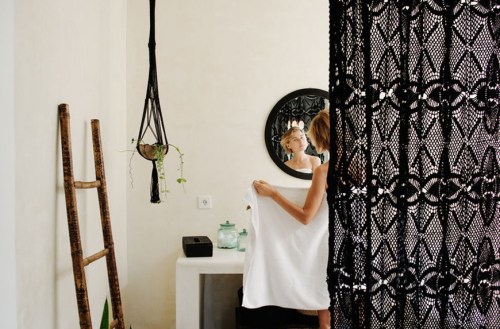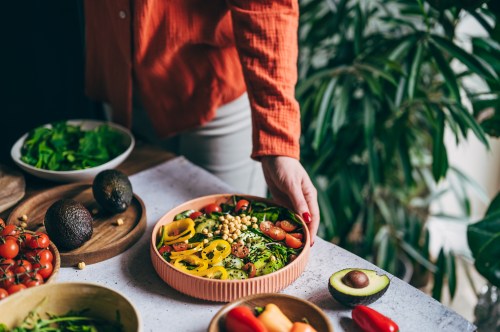4 tips for practicing breast health self-awareness all year long
Don't panic if you don't remember the exact steps to monthly self-exam. We've got the scoop on the most current, research-tested ways to protect yourself and promote breast health.

It’s October. You just saw six Facebook posts about Breast Cancer Awareness Month fundraisers, walked by a Duane Reade window splattered in pink, and it seems like everyone is yelling at you to check your breasts.
This year, Keep A Breast celebrating a decade of its “i love boobies!” campaign, Boarding for Breast Cancer is hosting “Bend it for Boobies” donation-based yoga classes, and the American Cancer Association is hosting countless runs across the country for the cause.
All these factors may prompt you to go home, head into the bathroom, lift up your top, and panic. Was it clockwise or counter-clockwise? Two fingers or three? And what the heck are you supposed to be feeling? But take a deep breath. The research on breast self-exams has progressed, and top medical institutions and physicians have a new, easier prescription for you: breast self-awareness. “The seven-step self-breast exam has gone by the wayside,” says Deborah Lindner, MD, the chief medical officer at Bright Pink, and a clinical instructor at Northwestern University Medical Center. “The problem is that nobody went on to define what breast self-awareness meant. We aren’t telling people ‘don’t do a breast exam’ or ‘never touch your breasts.’ But it doesn’t have to be done every month—it’s more about having awareness of your body.”
Why the change? Studies like this one have shown self-exam does not reduce mortality from breast cancer.
In response to this and other research, the U.S. Preventative Services Task Force issued a recommendation against self-exams, and many leading organizations—like the American college of OBGYN, the National Comprehensive Cancer Network, Bright Pink, and Susan G. Komen—switched to preaching breast self-awareness.
So what do you need to do in order to be breast self-aware?
Scroll down for Dr. Lindner’s four-step prescription for protecting yourself this month—and long after all the pink has faded away.

1. Know your family history
If there’s a lot of breast cancer in you’re family, then you’re likely at higher risk for the disease, explains Dr. Lindner (who had a preventive mastectomy after inheriting a BRCA1 mutation). “You should know who was diagnosed at what age and on what side of the family. If you don’t know your family history, you don’t know if you should be getting MRIs every year, for example,” she says. Bright Pink has an Assess Your Risk tool on its site, and the FDA just approved the first at-home screening kit, so you can figure out where you stand.
2. Know your normal
“If you don’t know the normal architecture of your breast, you won’t know when to speak up if something has changed,” Dr. Lindner says. Take a look and feel ASAP, and get to know them well. “Another part of knowing what’s normal is knowing where your breast tissue is—it goes all the way up to your collar bone.”
3. Know what the signs and symptoms are
You obviously need to understand what a cancer would feel like, Dr. Lindner says. “Typical cancers feel like a really hard, firm nodule—it feels like a frozen pea. You could also have nipple discharge, but we’re most worried about a lump—and if that lump hasn’t gone away with your cycle,” she says. “If you’ve felt your normal breast, then when you do feel them again, you know what you’re looking for.”
4. Know the risk factors
“There are things you can do lifestyle-wise, like maintaining a healthy body weight, lowering fat intake, increasing exercise, and limiting alcohol intake. They are well-known to reduce the risk of breast cancer,” Dr. Lindner says.
It doesn’t sound like that much work, right? “We need to teach women to be advocates for themselves, know the signs of cancer, know their family history, and get them into the doctor’s office every year,” says Dr. Linder. “If we do that, I think we’d be in a way better place when it comes to cancer.”
Originally published October 14, 2014; updated on October 2, 2018 with additional reporting by Kells McPhillips.
Here’s how to be there for a friend who’s struggling with the diagnosis, and what it’s like to be part of three generations of women who have fought breast cancer.
Sign Up for Our Daily Newsletter
Get all the latest in wellness, trends, food, fitness, beauty, and more delivered right to your inbox.
Got it, you've been added to our email list.










